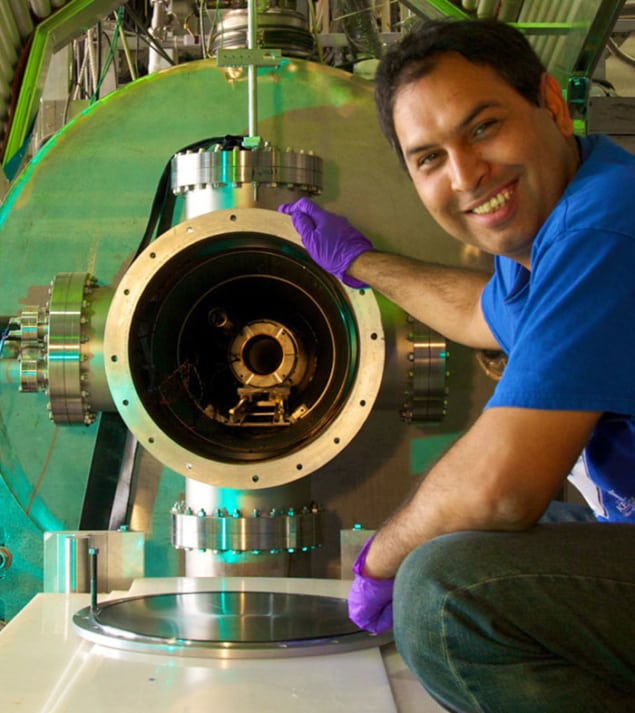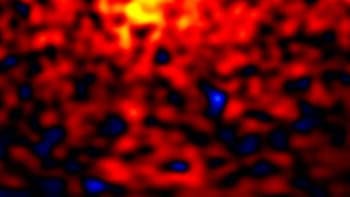
For more than 20 years, physicists have been unable to explain why two types of experiment yield different values for the lifetime of the neutron. One or more unknown systematic errors biasing the results is a possibility. But now a pair of particle theorists in the US have come up with an alternative explanation: that occasionally neutrons decay to a previously unknown particle which might account for the universe’s dark matter. They say that such a particle could leave a very distinctive signature in nuclear physics detectors.
When isolated, neutrons decay in around 15 min. They do so via beta decay, which involves a neutron transforming into a proton, an electron and an electron antineutrino. Conservation of energy, charge, angular momentum and other quantum numbers dictates that this is the only way that neutrons can decay within the Standard Model of particle physics.
To measure the average neutron lifetime precisely, physicists employ two basic techniques. One is to house neutrons within a container, known as a bottle, and simply count how many of them remain after a fixed interval of time. The other approach is to fire a neutron beam with a known intensity through an electromagnetic trap and measure how many protons emerge in a given time.
Growing disagreement
Ongoing since the early 1990s, the two types of experiment yield results that remain at odds with one other. While the bottle method tells us that neutrons decay after about 880 s on average, the beam tests put the figure around eight seconds higher – at 888 s. The difference is significant because it can’t be accounted for through either statistical or known systematic uncertainties. Until 2013, the discrepancy amounted to 2.9σ. Then, following improvements to the world’s leading beam experiment, the mismatch hardened – rising to 3.8σ.
In the latest work, Bartosz Fornal and Benjamin Grinstein at the University of California, San Diego propose that the anomaly could be a sign of dark matter. The idea is that while most neutrons disappear via beta decay, a small fraction (about 1%) would instead decay to a “dark sector” particle – a process that would violate the conservation of baryon number. While bottle experiments would measure both beta and dark decay, beam experiments can only detect beta decay. As a result beam experiments would overestimate the neutron’s lifetime.
The new proposal does not feature a unique dark particle with specific properties. But Fornal and Grinstein have shown that several candidate particles are consistent with existing experimental results. They have also shown that some of the possible decay routes generate clear experimental signatures. These include the neutron decaying into a dark particle, plus either an electron–positron pair or a photon, with the energy available for these accompanying particles limited by the narrow range of allowed masses for the dark particle.
Lighter than a proton
The dark particle’s mass must exceed that of beryllium-9 minus that of beryllium-8, since beryllium-9 is known to be stable and therefore doesn’t decay. At the same time, the mystery particle must be lighter than the neutron if that is to decay. In fact, if the particle is indeed the dark matter that has shaped the evolution of the universe then it must obey a slightly tighter constraint – it must be lighter than the proton and electron combined otherwise dark matter would be unstable, which observations tell us it isn’t.
These constraints lead to a particle of dark matter having a mass between 937.9–938.8 MeV. Given that the neutron weighs in at 939.6 MeV, an accompanying photon would have to have an energy between about 0.8-1.7 MeV.
Fornal says that such photons could potentially be seen in many nuclear physics experiments currently operating, but would only be visible once the immense amounts of background noise are filtered out (the photon having no detectable particle companion). He adds, however, that some experimentalists are devising data analysis techniques to try to remove the noise.
Striking experimental signatures
For Susan Gardner, a theorist at the University of Kentucky in the US, the newly postulated dark matter is “feasible” and cannot be excluded by any existing data. “It is particularly exciting,” she adds, “that some of the suggested scenarios have striking experimental signatures.”
In fact, two collaborations at the Los Alamos National Laboratory in New Mexico – UCNA and UCNtau – are currently searching for the photon (gamma-ray) and electron–positron signals within data from neutron decays. “Data are in hand and analyses are under way,” says UCNA team member Peter Geltenbort of the Institut Laue-Langevin in France.
Ben Rybolt of Kennesaw State University in the US describes the latest work as “a reasonable approach” to resolving the neutron anomaly, having himself worked on possible experimental signatures of a rival exotic solution – that ordinary neutrons can sometimes oscillate into non-Standard Model “mirror neutrons”. If upcoming, improved measurements of the neutron lifetime – involving magnetic bottles and monitoring of electron emission from a neutron beam – fail to uncover any hidden systematic errors, he says “there will be even more reason to look for exotic solutions”.
A preprint describing the research is on the arXiv server.



